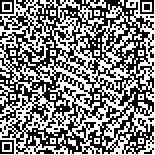苗金红,理阳,汪鑫,朱海洋,钟斌,李鹏辉,苏一帆,徐玉生.褪黑素对大鼠急性脊髓损伤后Nrf2-ARE信号通路的影响[J].中华物理医学与康复杂志,2017,39(6):406-411
扫码阅读全文

|
| 褪黑素对大鼠急性脊髓损伤后Nrf2-ARE信号通路的影响 |
| Effects of melatonin on the Nrf2-ARE signaling pathway after spinal cord injury |
| |
| DOI: |
| 中文关键词: 脊髓损伤 褪黑素 Nrf2-ARE信号通路 |
| 英文关键词: Spinal cord injury Melatonin Nrf2-ARE signaling pathway |
| 基金项目:河南省国际科技合作项目(134300510005) |
|
| 摘要点击次数: 2481 |
| 全文下载次数: 2920 |
| 中文摘要: |
| 目的 观察褪黑素(MT)对大鼠急性脊髓损伤后血红素氧化酶-1(HO-1)、磷酸酰胺腺嘌呤二核苷酸醌氧化还原酶-1(NQO-1)、红细胞衍生的核因子2相关因子2(Nrf2)表达的影响,探讨褪黑素在Nrf2-ARE信号通路中的作用机制。 方法 采用随机数字表法将72只成年SD大鼠分为对照组、损伤组及褪黑素组,每组24只。采用改良Allen′s法将损伤组及褪黑素组大鼠制成T11-T12脊髓损伤模型,并分别在脊髓损伤10min后腹腔注射等量无水乙醇或MT制剂;对照组仅行椎板切除暴露T11-T12节段,不损伤脊髓神经。各组分别于制模后6h、12h、24h时随机选取6只大鼠处死,提取T11-T12节段脊髓标本。采用HE染色法观察脊髓损伤及炎性反应情况;采用免疫荧光法检测HO-1、NQO-1及Nrf2蛋白表达;采用RT-PCR法检测大鼠脊髓组织中HO-1、NQO-1、Nrf2 mRNA表达。 结果 对照组脊髓神经元细胞形态正常,无水肿及坏死,无明显出血点;损伤组脊髓可见出血灶,炎性细胞明显增多,部分神经元水肿、坏死;褪黑素组脊髓出血灶较损伤组明显减小,神经元水肿程度亦相对较轻。在制模后12h、24h时发现褪黑素组脊髓HO-1、NQO-1及Nrf2 mRNA表达水平均显著强于损伤组及对照组(均P<0.05),损伤组脊髓HO-1、NQO-1及Nrf2 mRNA表达水平亦显著强于对照组(均P<0.05)。免疫荧光结果显示:褪黑素组脊髓切片中HO-1、NQO-1、Nrf2阳性细胞数量最多,损伤组次之,对照组最少,各组间差异均具有统计学意义(均P<0.05)。 结论 褪黑素可促进急性脊髓损伤大鼠脊髓中HO-1、NQO-1及Nrf2表达,其作用机制可能与激活Nrf2-ARE信号通路有关。 |
| 英文摘要: |
| Objective To observe the effects of melatonin (MT) on the expression of heme oxygenase-1 (HO-1), phosphorylated adenine dinucleotide quinone oxidoreductase-1 (NQO-1) and nuclear factor erythroid-2-related factor 2 (Nrf2), so as to explore the mechanism of MT′s action in the Nrf2-ARE signaling pathway. Methods A total of 72 Sprague-Dawley rats were randomly divided into a control group, an injury group and a melatonin group, each of 24. T11-T12 acute SCI was induced in the injury and melatonin groups using the modified Allen′s method. Ten minutes after the injury, equal amounts of absolute ethyl alcohol and melatonin were intraperitoneally injected into the rats in the injury and melatonin groups. For the control group, the vertebral plate was cut to expose the T11-T12 spinal cord without any injury of the nerves. Six rats from each group were randomly selected for sacrifice at 6, 12 and 24 hours after the operation, and T11-T12 spinal cord specimens were collected. The spinal cord injury and inflammatory response were observed using haematoxylin eosin staining. The expression of HO-1, NQO-1 and Nrf2 was examined using immunofluorescence, while the expression of HO-1, NQO-1 and Nrf2 protein and mRNA were detected using RT-PCRs. Results The neuronal cells in the spinal cords of the control rats were of normal shape, without edema, necrosis or obvious hemorrhagic foci. Hemorrhagic foci, significantly more inflammatory cells and some spinal cord neurons with edema and necrosis were observed in the injury group. However, significantly fewer hemorrhagic spots and cells with edema were found in the melatonin group compared with the injury group. The average expression of HO-1, NQO-1 and Nrf2 protein and mRNA was significantly higher in the melatonin group than in the other two groups. The levels in the injury group were also significantly higher than in the control group 12 and 24 hours after the experiments. Immunofluorescence showed that the greatest number of cells with HO-1, NQO-1 and Nrf2 was found in the melatonin group, followed by the injury group and then the control group, with significant differences among all 3 groups. Conclusion Melatonin can promote the expression of HO-1, NQO-1 and Nrf2 in rats with acute spinal cord injury, which might be related with its activating the Nrf2-ARE signaling pathway. |
|
查看全文
查看/发表评论 下载PDF阅读器 |
| 关闭 |
|
|
|